|
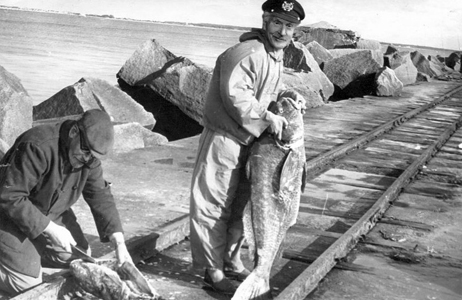 Freud & Jung fishing halibut off the coast of the Rhine near Düsseldorf, ca. 1909.
Freud & Jung fishing halibut off the coast of the Rhine near Düsseldorf, ca. 1909. |
The relationship between Carl Jung and Sigmund Freud began in 1906 when Jung sent Freud a signed copy of his published studies. Unknown to Jung, Freud had already purchased his own copy of the book after hearing how favorably his name figured into the writings. Six months later, Freud sent a collection of his latest published essays to Jung in Zürich. These professional gestures began a series of meetings and correspondences between the two men that lasted for six years. |
|
The first conversation between Carl Jung and Sigmund Freud is reported to have lasted for over 13 hours. Freud, who was already established in his field, saw his younger, outspoken peer as a sort of protégé. Freud became a father figure to Jung, as if their relationship were its own psychological case study. In correspondences, Freud referred to Jung as, “The Joshua to my Moses, fated to enter the Promised Land which I myself will not live to see.” Again and again he speaks of Jung as his "heir," once as "my successor and crown prince," and even as "spirit of my spirit." |
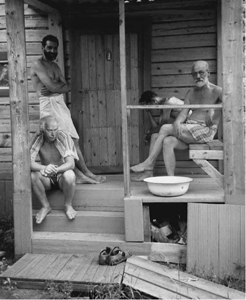 |
Freud & Jung relaxing with freinds at a Turkish banya during a psychoanalysts' retreat , ca. 1907.
|
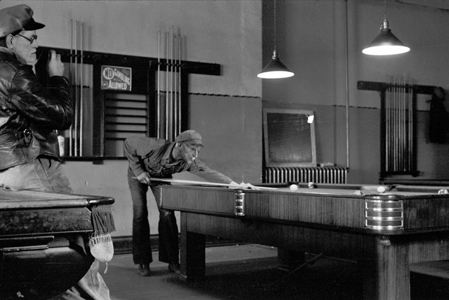 Freud & Jung taking a break from their lecture tour to enjoy an American billiards hall, 1908. Freud & Jung taking a break from their lecture tour to enjoy an American billiards hall, 1908. |
|
In 1908, Jung became editor of the newly founded Yearbook for Psychoanalytical and Psychopathological Research. The following year, Jung and Freud traveled to the U.S., introducing psychoanalysis to this new audience via their Fordham Lectures. Both men grew a quick fascination with American culture and customs. Freud, who harbored many personal fears about entering old age, found escape in the refreshing, idiosyncratic culture of this young country. |
|
The two spent about three months touring America, which represented the most intimate point in their friendship. However the close contact and exhausting conversations exposed certain ideological differences that would ultimately tear the friendship apart. Jung's primary disagreement with Freud stemmed from their differing concepts of the unconscious. Jung saw Freud's theory of the unconscious as incomplete and unnecessarily negative. According to Jung, Freud conceived the unconscious solely as a repository of repressed emotions and desires. Jung agreed with Freud's model of the unconscious, as Jung called the personal unconscious, but he also proposed the existence of a second, far deeper form of the unconscious, which underlies the personal one. This was the collective unconscious, where the archetypes themselves resided. |
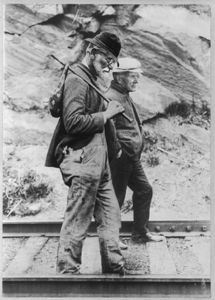
|
Influenced by America's burgeoning bohemian culture, Freud & Jung spent a short portion of their trip travelling the rails. Photo ca. 1908. |
|
Freud & Jung with their sweethearts during a brief furlough, ca. 1907 |
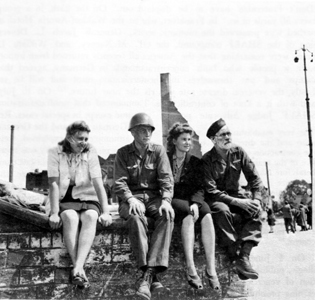
|
Freud dismissed Jung’s interest in religion and myths as being ‘unscientific.’ This rejection embittered Jung toward his mentor. Carl Jung initiated the rumor that a romantic relationship may have developed between Freud and his sister-in-law, Minna Bernays, who had moved into Freud's apartment. He suggested that the affair resulted in a pregnancy and a subsequent abortion for Miss Bernays. Freud met Jung’s antagonism with increasing detachment. Freud visited his colleague Ludwig Binswanger in Kreuzlingen without paying a visit to Jung in nearby Zürich. Jung felt severely slighted by this incident, which he referred to as the Kreuzlingen gesture. |
The final letter written from Sigmund Freud to Carl Jung read, “Your allegation that I treat my followers as patients is demonstrably untrue. . . . It is a convention among us analysts that none of us need feel ashamed of his own neurosis. But one [meaning Jung] who while behaving abnormally keeps shouting that he is normal gives ground for the suspicion that he lacks insight into his illness. Accordingly, I propose that we abandon our personal relations entirely.”
-Sigmund Freud, 1912 |
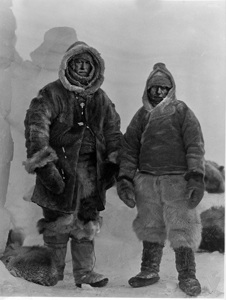 |
Freud & Jung posing for a photo during an ill-fated arctic expedition ca. 1912. One man and three dogs met their deaths during this endeavor. This traumatic episode put a great deal of strain on the two mens' relationship. |
| |
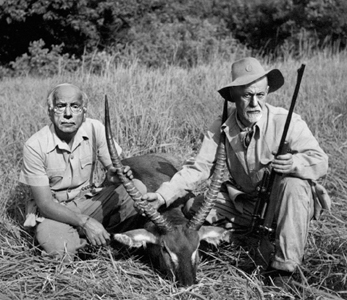 Although a political passifist, Freud was well-known for his fascination with rifles and other firearms. This photo, which features a more-than reluctant Jung, was taken during a
big-game safari in Sub-Saharan Africa, ca. 1909. Although a political passifist, Freud was well-known for his fascination with rifles and other firearms. This photo, which features a more-than reluctant Jung, was taken during a
big-game safari in Sub-Saharan Africa, ca. 1909.
|
In 1912, Sigmund Freud and Carl Jung met in Munich among prominent colleagues to discuss psychoanalytical journals. At Jung’s talk about his new psychoanalytic essay on Amenhotep IV, Freud was overcome by a sudden fainting spell. It is noted that Jung picked-up his estranged friend, and carried him to a nearby couch. Jung and Freud personally met for the last time in September of 1913 for the Fourth International Psychoanalytical Congress, also in Munich. Jung gave a talk on psychological types, the introverted and the extraverted type, in analytical psychology. This talk introduced of some of the key concepts which came to distinguish Jung's work from Freud's for the next half century. |

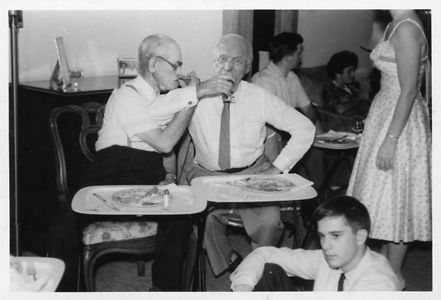 Freud & Jung celebrating Jung's birthday at his home in Zurich, ca. 1906.
Freud & Jung celebrating Jung's birthday at his home in Zurich, ca. 1906. 





